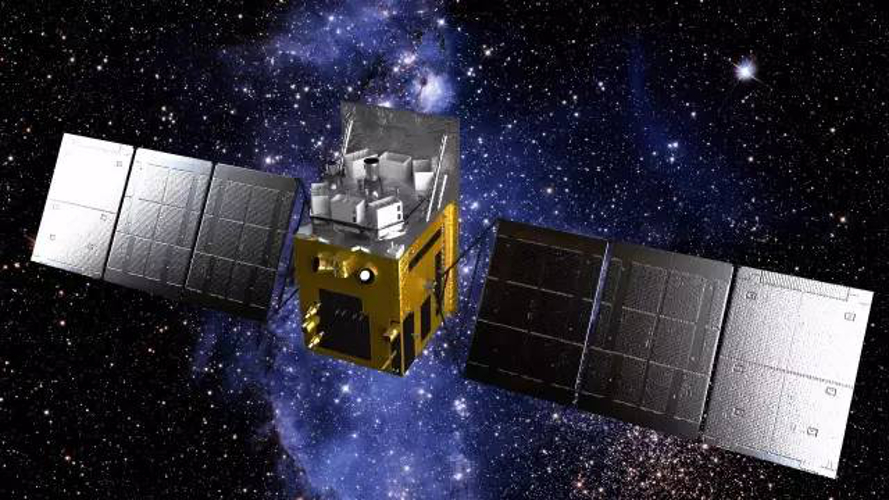
 Credit: Xinhua/Zhen Zhe
Credit: Xinhua/Zhen Zhe
The Long March to Space
On June 15, 2017, China launched a Long March-4B rocket from the Jiuquan Satellite Launch Center in the Gobi Desert. Onboard was China's first X-ray astrophysics mission, the Hard X-ray Modulation Telescope (also known as "Insight"). HXMT consists of three collimated X-ray astrophysics experiments: the high energy X-ray telescope (operating in the energy range of 20-250 keV), the medium energy X-ray telescope (operating in the 5-30 keV range), and the low energy X-ray telescope (which is sensitive to X-ray energies of 1-15 keV). HXMT will use these X-ray detectors to study X-ray sources like neutron star pulsars and black holes, and to find new transient sources. HXMT will also attempt to use X-ray pulses to determine locations in space, similar to the "pulsar global positioning system" being tested by SEXTANT (alias NICER). HXMT uses a novel technique of direct demodulation of the observed X-ray signal to reconstruct X-ray images at relatively high angular resolution. As a result, HXMT offers a combination of high-angular resolution, and high time resolution and spectral resolution to study high energy sources in the cosmos.
Published: June 19, 2017
<
HEA Dictionary ● Archive
● Search HEAPOW
● Other Languages
● HEAPOW on Facebook
● Download all Images
● Education ● HEAD
>

Each week the HEASARC
brings you new, exciting and beautiful images from X-ray and Gamma ray
astronomy. Check back each week and be sure to check out the HEAPOW archive!
Page Author: Dr. Michael F. Corcoran
Last modified Tuesday, 27-Feb-2024 10:13:25 EST


